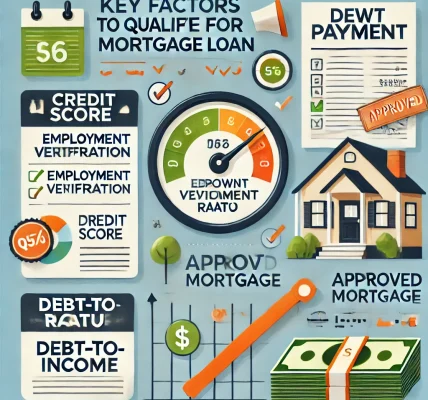When it comes to securing financing, whether for a personal loan, business venture, or investment, reviewing and comparing loan policies is essential to getting the best deal. With so many lenders and loan options available, it can be overwhelming to choose the right one. However, by understanding key loan policies and comparison strategies, you can ensure you make an informed decision that aligns with your financial goals.
In this guide, we will explore how to effectively review and compare loan policies, the factors to consider, and tips to help you secure the most favorable terms.
1. Understand the Basics of Loan Policies
Before diving into comparing loan offers, it’s crucial to understand what loan policies include. Loan policies typically cover the terms and conditions of the loan, including the interest rates, repayment schedule, fees, collateral requirements, and other factors that determine how the loan will be structured and repaid. Here are the main elements you should focus on when reviewing loan policies:
a) Interest Rates
The interest rate is one of the most critical aspects of any loan. A lower interest rate means you’ll pay less in interest over the life of the loan, which can result in significant savings. Interest rates can either be fixed (remain the same throughout the loan) or variable (fluctuate with market conditions).
- Fixed Rate Loans: These loans have a constant interest rate, which provides predictability in your monthly payments.
- Variable Rate Loans: These loans have interest rates that can change periodically based on the market. While they may start with a lower rate, they can increase over time.
b) Loan Term
The loan term refers to the length of time you have to repay the loan. Loan terms typically range from one year to 30 years, with the most common being 15-20 years for mortgages or business loans. The longer the term, the lower your monthly payment, but the higher the total interest paid over the life of the loan.
- Short-Term Loans: These loans have a shorter repayment period and typically come with higher monthly payments but lower overall interest costs.
- Long-Term Loans: These loans have lower monthly payments but tend to accumulate more interest over time.
c) Fees and Charges
In addition to interest rates, loans often come with fees such as origination fees, closing costs, early repayment fees, and others. These fees can add up quickly and impact the total cost of the loan, so it’s important to ask lenders about any additional charges.
- Upfront Fees: These are fees paid when the loan is issued, such as processing or application fees.
- Ongoing Fees: These include monthly service fees or annual maintenance charges.
- Prepayment Penalties: Some loans charge a fee if you pay off the loan early, as the lender loses out on interest payments.
d) Collateral and Loan Security
Some loans, especially larger ones, may require collateral. This is an asset (like real estate, equipment, or savings) that the lender can seize if you default on the loan. Collateral reduces the lender’s risk, which may result in better loan terms for you.
- Secured Loans: These loans require collateral, such as mortgages or auto loans.
- Unsecured Loans: These loans do not require collateral but often come with higher interest rates due to the higher risk for the lender.
e) Repayment Schedule and Flexibility
The repayment schedule outlines when payments are due and how much you need to pay. Some loans offer flexible repayment schedules, such as the ability to make extra payments without penalty or change your payment amount if your financial situation changes.
- Fixed Payments: Regular, consistent payments that stay the same over the loan term.
- Variable Payments: Payments that can fluctuate based on the outstanding loan balance or interest rates.
2. How to Compare Loan Policies: Key Factors to Consider
Once you understand the key components of loan policies, it’s time to start comparing different offers. Here are the factors you should focus on to ensure you’re getting the best deal:
a) Interest Rate Comparison
Start by comparing the interest rates of different loans. Look for the lowest rates possible while considering the type of loan. Remember, even a small difference in interest rates can have a huge impact on your total repayment amount over the life of the loan.
- Example: A $100,000 loan with a 4% interest rate over 20 years would cost significantly less than the same loan with a 5% interest rate.
b) Total Cost of the Loan
Look beyond the monthly payment and interest rate to determine the total cost of the loan. This includes all fees, charges, and the overall amount you will pay over the life of the loan. Many lenders provide a Loan Estimate document that breaks down these costs.
- Tip: Use online loan calculators to estimate your monthly payments and total costs across different loan terms and amounts.
c) Loan Term and Repayment Period
Consider the loan term and repayment period in relation to your financial capacity. While longer loan terms can reduce your monthly payment, they often result in paying more interest over time. On the other hand, shorter terms can save you money on interest but may strain your budget with higher monthly payments.
- Strategy: Choose a loan term that balances manageable monthly payments with the total amount you’re willing to pay over the life of the loan.
d) Loan Type and Flexibility
The type of loan you choose can make a significant difference. For example, government-backed loans (like FHA, VA, or USDA) may offer better terms than conventional loans. Additionally, consider how flexible the loan terms are in case you need to make adjustments in the future.
- Example: An FHA loan might offer a lower down payment requirement and a more forgiving credit score threshold, which can be an advantage for first-time buyers.
e) Lender Reputation and Customer Service
It’s important to consider the reputation and customer service of the lender. Read reviews and talk to current or past customers to gauge the lender’s reliability and willingness to help you throughout the loan process.
- Tip: Look for lenders with a reputation for transparency, responsiveness, and strong customer support.
3. Tips for Securing the Best Loan Deal
Here are some practical tips to help you secure the best loan deal:
a) Shop Around
Don’t settle for the first loan offer you receive. It’s essential to shop around and get quotes from multiple lenders to ensure you’re getting the best terms.
b) Improve Your Credit Score
A higher credit score can lead to better loan terms, including lower interest rates and better repayment options. If possible, work on improving your credit score before applying for a loan.
c) Negotiate Terms
If you find a loan with terms you like but feel the interest rate or fees are too high, consider negotiating. Some lenders may be willing to lower fees or offer more favorable terms to secure your business.
d) Consider Loan Consolidation
If you have multiple loans or debts, consolidating them into one loan can simplify repayment and may even lead to a lower interest rate or better terms.
e) Understand the Fine Print
Before signing any loan agreement, read all the terms and conditions carefully. Make sure you understand everything, including fees, penalties, and any clauses that could affect you later on.
4. Conclusion: Getting the Best Loan Deal
By understanding the different loan policies, comparing the key components, and following a strategic approach, you can secure a loan that best meets your financial needs. Whether you’re investing in real estate, starting a business, or funding a personal project, getting the best deal can save you thousands of dollars over the course of the loan.




